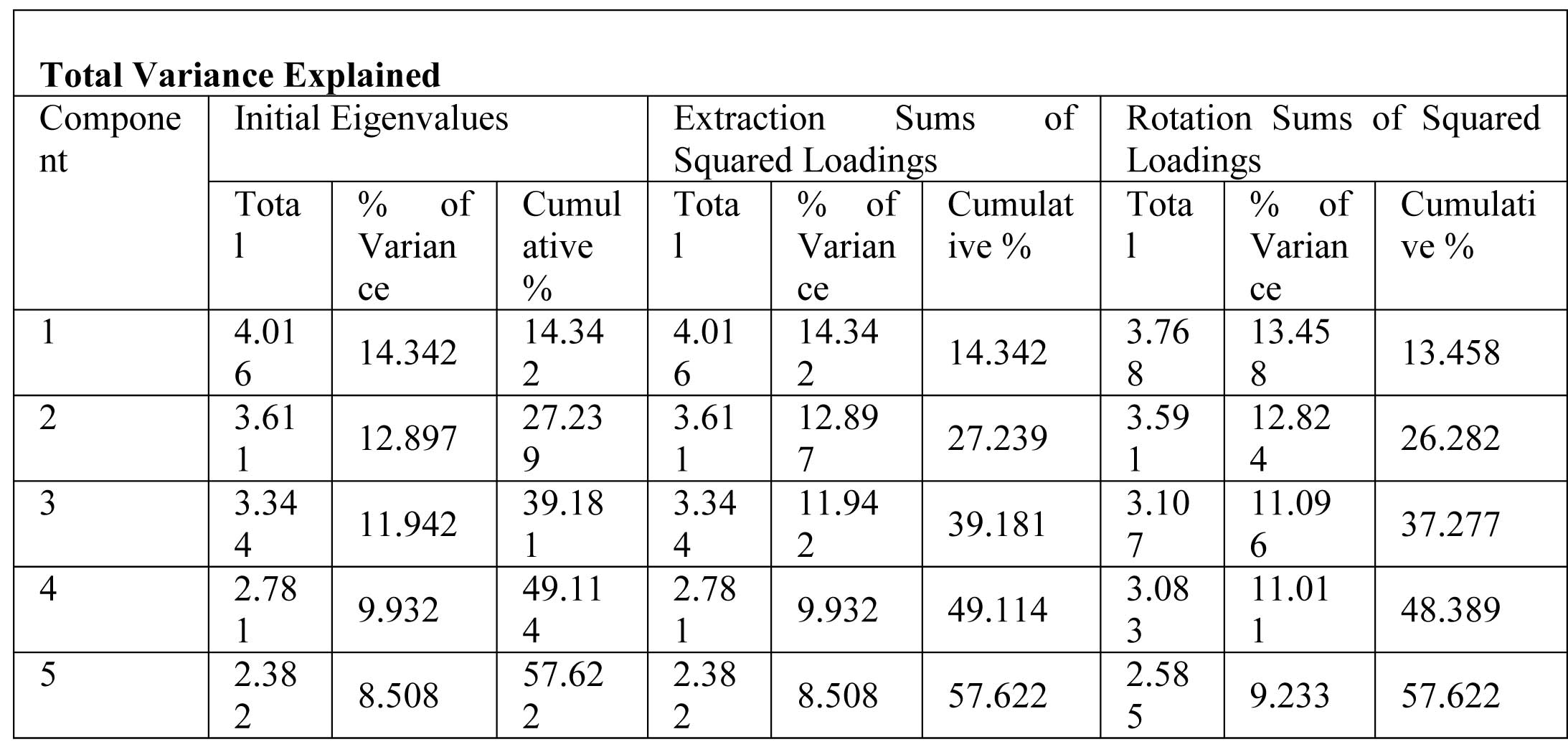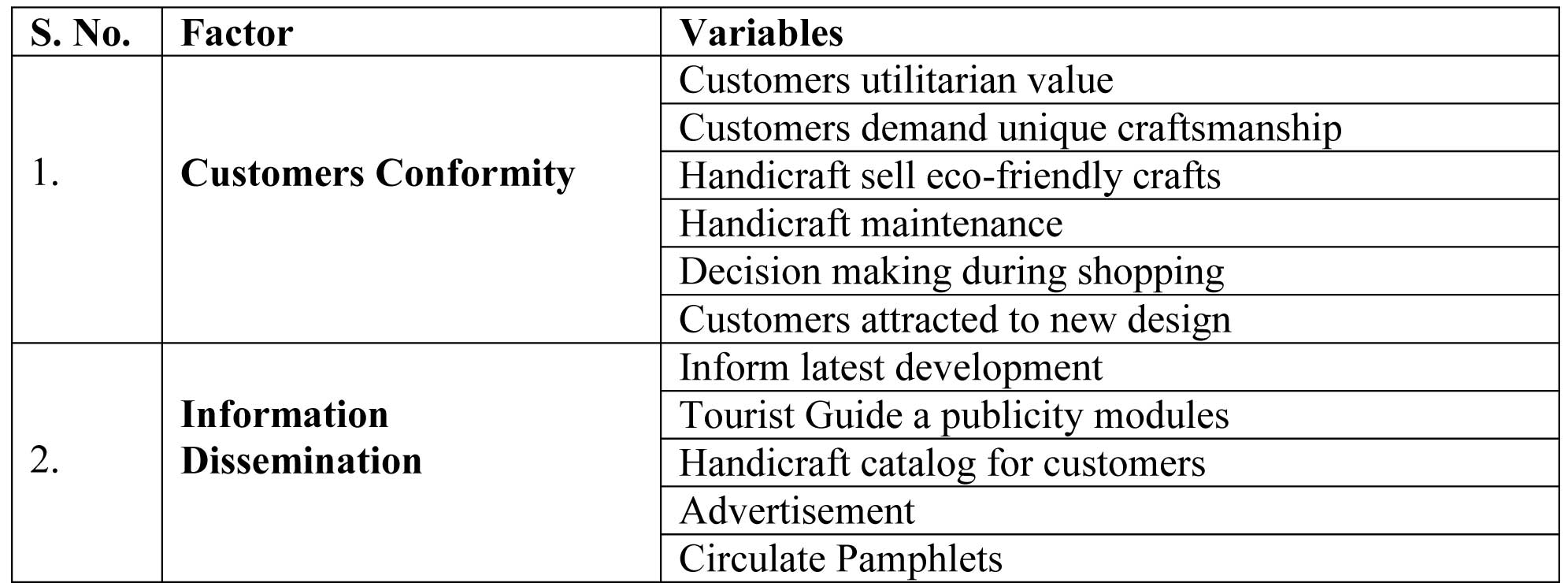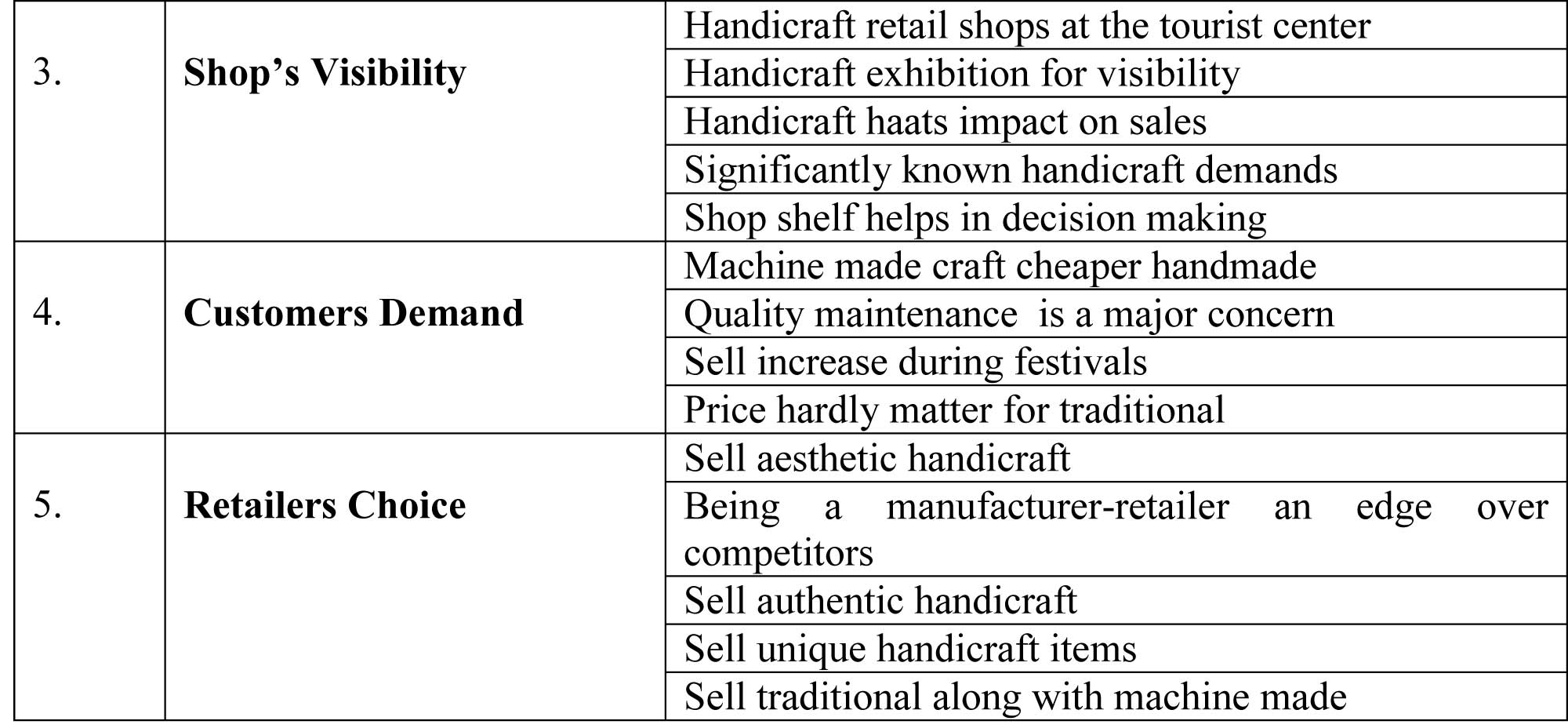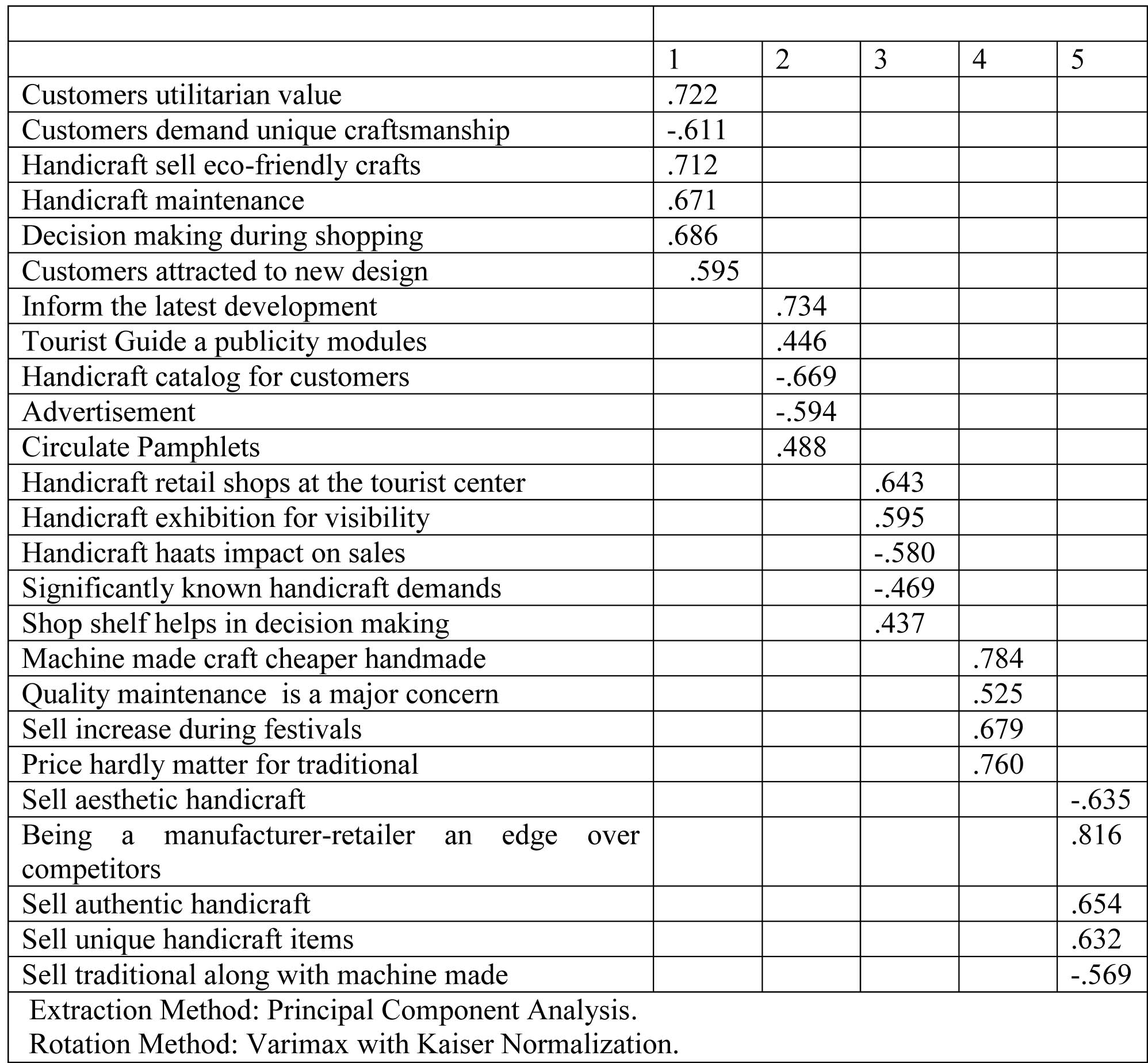Subscribe now to get notified about IU Jharkhand journal updates!
An Analysis of Influencing Factors of Handicraft Retail Sector
Abstract :
This study focuses on the retail sector of handicraft in Varanasi city, Uttar Pradesh, as an
important segment between producers and users of craft items. The retail sector of craft
provides a significant platform where producers sell their crafts and customers buy craft
items according to their uses. In this study, we investigate the most prominent issues related
to the retail sector, which negatively affects the growth of crafts selling.
The major influencing factors of the retail sector are customer's conformity, Information
dissemination, shop's visibility, customers' demands, and retailer's choices. These factors
help to strengthen the bonding between the producers and users of the craft items and it helps
the artisans to produce crafts according to the customers.
The paper is divided into four sections in which, the first section discusses about the retail
sector of handicraft craft and the methods of selling the craft items. The next section includes
the review of literature related to the different aspects of the retail shops. The next section
deals about the objectives and research method of the paper and fourth section deals with the
data analysis and interpretation of the study of the retail sectors of the crafts. The last section
includes the findings and conclusions, which highlighted the most influencing factors which
adversely affects the selling of the craft products.
Keywords :
Artificial Emotional intelligence, Affective computing, research, progress.Introduction:-
The word ‘retail’ means the sale of goods or merchandise in small quantities directly to
consumers. Retailing can be defined as a distribution channel functions, where organization
buying the product from supplying firms or manufacturing the product themselves, sells these
directly to consumers.
Indian handicraft retail sector is highly unorganized in nature with domestic market lacking
adequate visibility. However, there is a good scope for leading industry players to invest and
to expand the segment and gain by fulfilling the international demand and also make a profit
in the domestic market to increase the awareness among the customers. Most of the manufacturers have their own independent retail shop engaged in the selling of crafts.
Organized retailing has a strong supply chain, excellent in-store services, value-based price, distribution network and classical positioning of the craft products which influence in the success of the handicraft sector. Companies such as FabIndia, Hansiba, Mother Earth and Anokhi are key players of organized handicraft retailing. FabIndia is the most successful social enterprise which includes poor people in their supply chain thereby providing economic benefits and social security.
Crafts retail includes diverse products from across the region, which sell through commercial outlets, producers’ outlet and galleries, which should be cost effective and meet customers demand (Kaiser, 2007).
Gandhi Shilp Bazaar/Crafts Bazaars and Gamin Haat are organized retail activities which are planned at national and international level and have an important medium of marketing that provides a common platform where crafters develop a relationship with the retailers and customers. The retailer uses the following methods to sell their products.
- Direct retail by Producers
- Wholesaler, retailers, and agents
- Street vendors
- Craft and flea markets and festivals – local melas and festivals
- Specialist outlets and Boutiques
- Gandhi Shilp Bazaars/ Crafts Bazaars
- Galleries and Museum Shops
- Gramin Haats
- Mainstream Retailers
Review of Literature
Review of literature provided a framework for the research and there are few kinds of literature which is based on the craft sector. According to the Neha Nagori et. al. (2012) emphasized the importance of the retail sector to make availablethe craft products according to the need and demand of the customers. Accordingly, Vainio-Korhonen, K. (2000), opined that most of the handicraft artisans engaged or worked as a profession. The researcher conducted his study in Turku and pointed out that men and women worked separately in their social, economic and political premises. He found that if a man wanted to start his carrier in the handicraft sector, he should need formal training, pay tax liability and worked in an organized form. Handicraft work gave them social power and prestige but they required proper documents to continue the work. But in the case of women artisans, the work was almost unregulated, did not required proper training, untaxed, had no status, was poorly documented and worked in unorganized form. These show the gender biasedness in the practices of handicraft production, which was not the healthy practices in that region. Therefore we need to provide equal facilities and opportunities to both men and women for the growth and development of the handicraft sector.
According to the Venkataramanaiah, S., & Kumar, N. G. (2011) due to the increasing global competition, economic development, and technological advancement the competitiveness in
the handicraft sector increased. Therefore, we should be focused on those competitive advantages which provide competitive edged during production, selling and marketing of the craft items. Harris, J. (2014)opined that cost structure, hiring practices and intra-industry relationship in crated adversely affect production and retailing activities of the craft sector. Tero and Erkki (1979) found that formulation of marketing strategy depends upon the different market condition and objectives like non- adaptive, time- dependents, competitively adaptive, sales responsive and profile responsive strategy which helps to capture the market due to the changes in seasonal growth, merchandising and competitive aspects of the markets.
Yoram et.al (1973) said that sophisticated management approaches has a vital role for formulating international marketing strategy in which four types of altitudes or orientation has played a significant role like ethnocentrism (Home country orientation), polycentrism (Host country orientation), regiocentricism (a regional orientation) and Geocentrism (a World orientation). These depend upon the different market environment and intracompany factors on the basis of cost and benefits of the firms.Nigel et.al (2011) opines that the role of strategic management is very important in marketing management because the traditional approach of marketing has not been playing a significant role in the real world of business. The educational organization and training center has a tough task for the strategy management to design and delivery the education.
Yihao and Yuning (2010) found that consumer's psychology is an important strategic aspect through which industries should design their crafts products. Handicraft industry has facing different types of problems regarding detachment from the modern manufacturing technique, large flexibilities in design and have less knowledge related to the different types of promotional activities etc.R. Ramaswamy (2013) opined that the handicraft promoting federation should play a significant role in increasing the competition at the local, National and International level and the marketing research is the part of the marketing management, which has an unavoidable position to know the test and preferences of the customers in the craft markets.
Kumar and Rajeev (2013) said that this the era of e-commerce. The Internet has been playing a vital role to provide a common platform for each and every business. It is a cheap and strong medium through which consumers easily know about any products features, price, availability, accessibility, order the products, paying the prices etc. handicraft industry needs this medium to markets their products which has an effective way through which the small retailers take these benefits after small investment and it covers large proportion of the customers including local, national and international as compared to the other medium of the of advertisement like banner, poster, pump lets, exhibition etc.Ghosh and Craig (1983)suggested that the location of the retail outlet has played a key in the changing environment because it helps in predicting the possible competition in the future and what are the changes have been taken place after demographical changes in the future. It is necessary to make a plan before opening the retail shop.
S. M. Ghouse (2012) talked about the different problems has been facing by the handicraft industry like licensing problems, low demands, lack of access to raw material, shipping problems, internet connectivity and lack of market awareness etc. which make this industry incapable to fully utilized their ability to give maximum productivity. The Indian retail industry is the fifth largest retail industry in the World and it comprises of both organized and unorganized retail format. Indian retail industry is the fastest growing sectors, which has immense opportunities to fulfill the diversifying Indian customers' demands. (Sunita and Dipti 2012). According to a joint study by ASSOCHAM and Yes Bank the overall retail market in India has been growing at the rate of 15 percent and it will reach near Rs 47 lakh crore in 2016-17 and it stood at Rs. 23 lakh crore in 2011-12. It shows the future prospects of the retail sectors in India.
Research Methodology:
Objective:
To examine the factors which influence the retail sector of handicraft.
The present research paper is descriptive as well as exploratory in nature and the population of the study was all the handicraft retailers in Varanasi district of Uttar Pradesh. The total sample size was 62 handicraft retailers and snowball sampling technique was used for the collection of primary data. Different reports, research paper, annual reports of handicraft etc. were used during the preparation questionnaire and in-depth knowledge of the handicraft sector. Descriptive and factor analysis methods were used to know the influencing factors of handicraft retail during analysis.
Analysis and Interpretation
Descriptive statistics
The descriptive statistics depicted that, 95.20% respondents were male and 4.80% female and the average age group of persons involved in the selling of handicraft productswere in the age group of 31-40 years, which constituted 35.50% followed by the age group of 51-60 constituting 25.80%.61.30% respondents were a family size 5-8 members and 17.70% respondents were a family size 9-12 members in their family and the average monthly income of the 50% respondents were Rs. 5001-10,000 and 19.4% of respondents were monthly income Rs. 5,000 per month.
Reliability
Table No. 1 Reliability
Scale: All Variables

Table No. 2Reliability Statistics

A total of 62 complete responses were obtained out of 115 retailers approached. The reliability test was employed on the response received from retailers of the handicrafts. The reliability of the data was checked by calculating Cronbach's-alpha (α) which was found to be .716(> .70), well within acceptable range.
Factor Analysis
Exploratory factor analysis helps to investigate the underlying dimensions that could cause correlation among the observed variables and also it leads with building theory.
Table No. 3 KMO and Bartlett's Test


Factor analysis through principal component analysis with varimax rotation method was applied on retailers experience towards handicraft selling’ questionnaire and items with factor loading above 0.40 were considered to determine items clubbed into a single factor.
Further, the measure of sampling adequacy through KMO comes out to be .525 and Bartlett's test of Sphericity indicate the Chi-square of 1388.622 with df= 378, p= .000<0.05]. These values indicate the appropriateness to proceed with factor analysis. Five factors emerged prominently covering 57.622 percent variance.
Table No. 4 Total Variance Explained
Views on product quality can be expressed to the marketers positively through an online customer feedback process.

The identified factors were analyzed for a common thread and accordingly the naming of the factors was performed.
Table No. 5 Factors Identified


Table No. 6 Rotated Component Matrix

Findings:
The first factor comprises items handicraft utilitarian value, unique craftsmanship, eco-friendly in nature, handicraft maintenance, decision making during shopping and customer’s attraction towards crafts with loading 14.342% and the factor was named as customers' conformity.
The second factor comprises items Inform the latest development, tourist guide publicity modules, catalog for customers, advertisement and circulates pamphlets with loading 12.897%and the factor was named as Information Dissemination.
The third factor comprises items handicraft retail shops at the tourist center, handicraft exhibition for visibility, handicraft haats impact on selling, significant known retail shops and shelf help in decision making with loading 11.942% and the factor was named as shop's visibility.
The fourth factor comprises machine made craft items, quality products, sale increase during festivals and price hardly matter for traditional with loading 9.932% and the factor was named as customers’ demands.
The fifth factor comprises items such as aesthetic handicraft, manufacturer edge, sale authentic handicraft, sale unique craft items and sells traditional items along with machine-made with loading 8.508% and the factor was named as retailer choice.
Conclusion
It could be concluded that the retailers agreed to the fact that the customers demand handicraft products with high utilitarian value and aesthetic sense. Further, the retailers did not take any step either for providing information at tourist desk in the form of pamphlets or catalogs to generate awareness among the customers for handicraft products, though, they sold only genuine products.
It was also necessary for the retailers to maintain a website and consciously display a new product, which they prominently display in the shops, or, while participating in exhibitions. The rigidity of the retailers not to take up any promotional activity could act as a hindrance in the promotion and growth of handicraft products. Further, the problem gets aggravated, when the retailers are resorting to selling machine made products, even though, they are aware that the customers demand handmade products with unique craftsmanship. The encouraging fact is that there is an increase in sales during special occasions for handicraft products.
References:
- Ghosh, A., & Craig, C. S. (1983). Formulating retail location strategy in a changing environment. Journal of Marketing, 47(3), 56-68.
- Ghouse, S. M. (2012). Indian handicraft industry: problems and strategies. International Journal of Management Research and Reviews, 2(7), 1183.
- Harris, J. (2014). Meeting the challenges of the handicraft industry in Africa: Evidence from Nairobi. Development in practice, 24(1), 105-117.
- Kumar, D., & Rajeev, P. V. (2013). A new strategic approach for marketing of handicraft products. International Journal of Applied Services Marketing Perspectives, 2(3), 540.
- Vadakepat, V. M. (2013). Rural retailing: Challenges to traditional handicrafts. Journal of Global Marketing, 26(5), 273-283.
- Vainio-Korhonen, K. (2000). Handicrafts as professions and sources of income in the late eighteenth and early nineteenth century Turku (Åbo): A gender viewpoint to economic history. Scandinavian economic history review, 48(1), 40-63.
- Venkataramanaiah, S., & Kumar, N. G. (2011). Building competitiveness: a case of handicrafts manufacturing cluster units. Indore Management Journal, 3(2), 27-37.
- Wei, X., Tran, P., De Vaucorbeil, A., Ramaswamy, R. B., Latourte, F., & Espinosa, H. D. (2013). Three-dimensional numerical modeling of composite panels subjected to underwater blast. Journal of the Mechanics and Physics of Solids, 61(6), 1319-1336.
- Wind, Y., Douglas, S. P., & Perlmutter, H. V. (1973). Guidelines for developing international marketing strategies. Journal of Marketing, 37(2), 14-23.
- Yihao, Z. and Yuning, Z. (2010). The Strategic Research of Traditional Handicraft Products' Modern Development bases on Consumer Psychology. 978-1-4244-7974-0/10.
- http://udyogbandhu.blogspot.in/2011/08/magic-touch-of-golden-hands-handicrafts.html
- https://www.tradeindia.com/lucknow/handicraft-items-city-228093.html
- https://search.yahoo.com/search?ei=utf8&fr=tightropetb&p=handicraft+in+uttar+pradesh&type=39849_022417
- http://handicrafts.nic.in/Page.aspx?MID=GjoDfPSc1OqY99AS5ZYkjw==
- http://www.ibef.org/exports/handicrafts-industry-india.aspx
- Annual Report (2012-13), Ministry of Textile, Government of India.
- Annual Report (2013-14), Ministry of Textile, Government of India.
- Annual Report (2014-15), Ministry of Textile, Government of India.
- Annual Report (2015-16), Ministry of Textile, Government of India.
